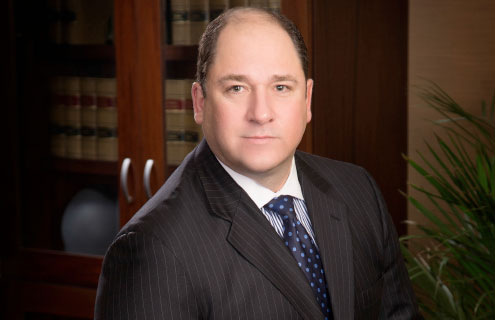Kerr Russell
Can you outline your role and responsibilities Kerr Russell?
I am a senior partner here at Kerr Russell, having joined the firm out of law school in 1991. I work in the captive insurance and corporate law practice areas. I have been working with captives and other alternative risk structures for the last 20 years.
In my role, I work directly with captive clients, which encompass all types of captives across a number of different operational industries. I am also supported by an outstanding team of captive attorneys, with the collective aim of providing exceptional and cost-effective legal advice and service to our captive clients.
How has 2018 been for Kerr Russell in the captive market?
This year has been exceptionally robust in the captive market, and our practice is stronger than ever. To mention just a few examples, I’m working on a new heterogeneous group captive that will be domiciled out of the Cayman Islands; I am also working on a Hawaii-domiciled captive for a large healthcare system. As a result, I will be attending the Hawaii Captive Insurance Association Conference for the first time in October. We have several other captives which we recently assisted in structuring and forming and still others that are in the planning stages.
Our mature captive clients continue to face issues as the industry constantly evolves. We are keen to help them successfully navigate industry-wide issues as well as the challenges unique to their particular situation. This year has thus far been very busy for us and we are grateful.
What do you think of the current state of the captive market?
I think overall the market remains strong. It is an interesting time, I must admit. Captives increasingly find themselves in the news for various reasons, most good, some bad. micro captives remain the subject of intense Internal Revenue Service (IRS) scrutiny, which has negatively impacted that area. However, 831(b) captives that are set up for legitimate insurance reasons remain a very compelling option, especially given the increase in the qualifying premium threshold. With the recent ‘Avrahami and Reserve Mechanical’ Tax Court decisions, the IRS is on a bit of a roll and, among other issues, pooling arrangements have come under attack.
However, in both of these cases, some disadvantageous facts proved easy targets for the IRS. What I take from the decisions is that properly structured captive arrangements, including those that incorporate proper pooling arrangements, are readily distinguishable and should continue to withstand scrutiny.
On the whole, I believe the captive space remains strong for a number of reasons, some of which include: overall increased awareness of captives; the rising number of companies becoming frustrated with volatile pricing in their industry; the growth in the number of legitimate domiciles—especially in the US; the advent of innovative coverages in an increasingly complicated world; and the continued availability of traditional reinsurance which allows fronted programmes to remain competitive.
The captive industry is ever-evolving, which makes it exciting. It continues to flourish because intelligent organisations will always seek to better control their risks and insurance dollars through alternatives to the traditional insurance market.
There is a new generation of professionals entering the industry, energised and bringing new ideas. While the captive industry continues to face a myriad of challenges, it remains very rewarding for a great deal of companies.
What do group captives offer?
Group captives come in many shapes, structures and sizes, but essentially they allow companies that may not be large enough (from an insurance dollar standpoint) to form their own (single-parent) captive to nevertheless participate in a captive programme and enjoy its benefits. If they have a positive loss profile, they should be able to lower and stabilise their overall insurance costs as opposed to being priced with their industry in a volatile market.
Another, perhaps less obvious, benefit for companies participating in group captives is that such companies typically become much better from a safety, risk control and claims handling standpoint. What I have seen from my 20 years working with group captives is a heightened focus on safety, risk management and claims. There are a few reasons for this. First, the group captive members are working with their own dollars rather than insurance company dollars. Second, they’re accountable to the other group captive members, with whom they are sharing risk. If you’re causing a lot of risk sharing, the semi-annual meetings might be a bit uncomfortable.
Additionally, companies see the direct impact of their risk and claims management efforts on their bottom line and benefit from an increased awareness of risk management and loss control best practices. Participants are able to learn what other quality, best-in-class companies are doing. There is an exchange of risk mitigation ideas, especially in the homogenous group captive setting, which benefits the collective membership.
Finally, group captive participants are able to share operational best practices as well.
Who are group captives best suited for?
Group captives are ideally suited for companies that operate in industries with inherently difficult risk profiles, leading to volatile and high pricing in the traditional insurance market. The best candidates are the companies in those industries that are best-in-class from a safety standpoint, but are nevertheless still priced with the industry.
Some industry examples include trucking, construction and manufacturing. Homogenous group captives have responded to the need for these types of companies to look at alternative insurance structures.
Additionally, any company that spends significant insurance dollars and that has made risk reduction, safety, and aggressive claims handling a priority will benefit from the group captive model. Likewise, companies that haven’t acted yet but have a desire to take control of their risk management costs and make themselves safer will always be good candidates. Indeed, companies looking to leverage safety as a market differentiator will always benefit from the group captive structure.
What are some of the best practices for group captives?
Oh, where do I start? A successful group captive should be completely transparent and able to withstand the most intense scrutiny. The members need to fully understand the captive structure and its risks, the money flow, the costs and coverages, the service provider roles and compensation dynamics, and exit strategy.
All of this and more needs to be fully transparent and explained to the members up front and in writing. Members need to feel free to challenge things that don’t make sense and not just drink the ‘Kool-Aid.’ While complete unbundling of the captive services provided by third parties would appear optimal, this is not always practical and there are certain economies to be enjoyed with some bundling of services, so long as there remains complete transparency and member awareness of the potential conflicts and disadvantages to bundling.
Additionally, the group captive needs to be run properly, with regular meetings, appropriate checks and balances, proper corporate governance and internal controls, a detailed risk management framework, vigorous committees, written protocols and procedures and significant member involvement, all in an effort to avoid problems and surprises from a financial or risk management perspective. Members need to educate themselves concerning all aspects of the captive.



